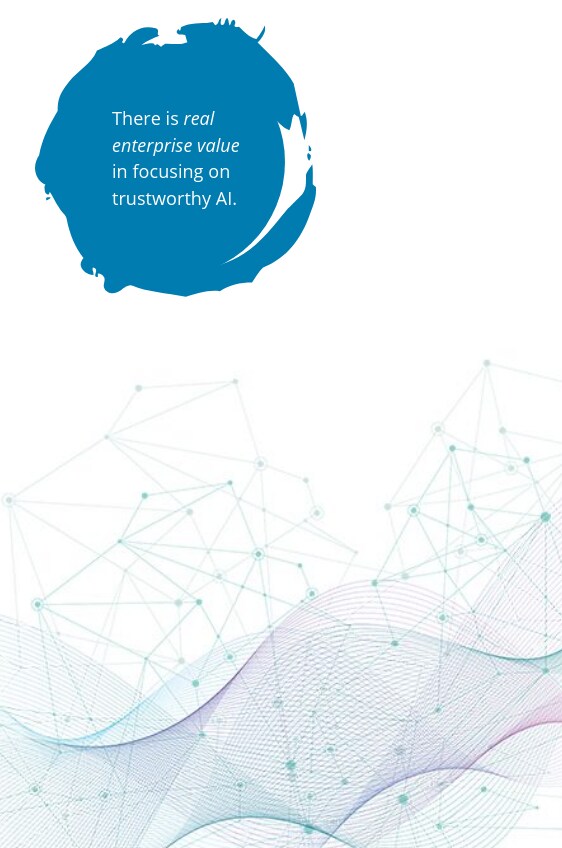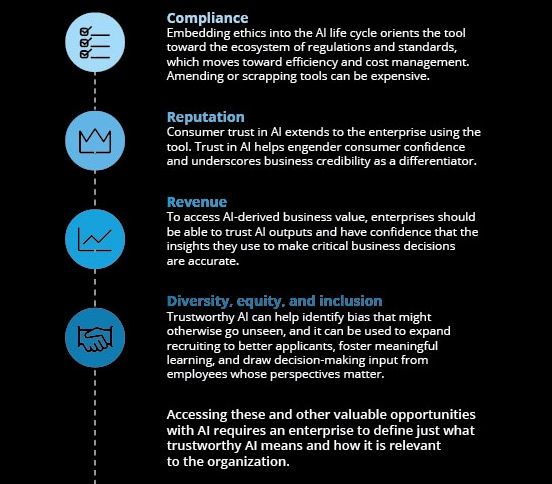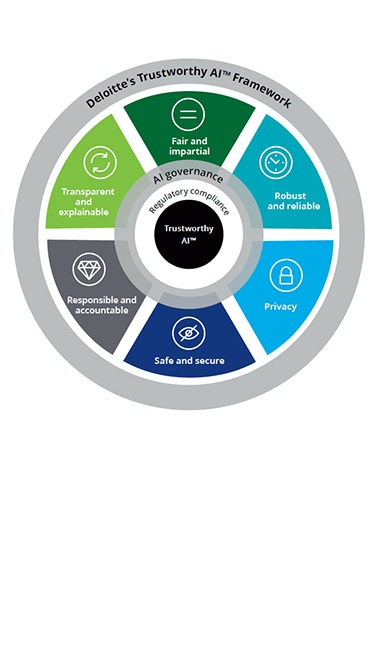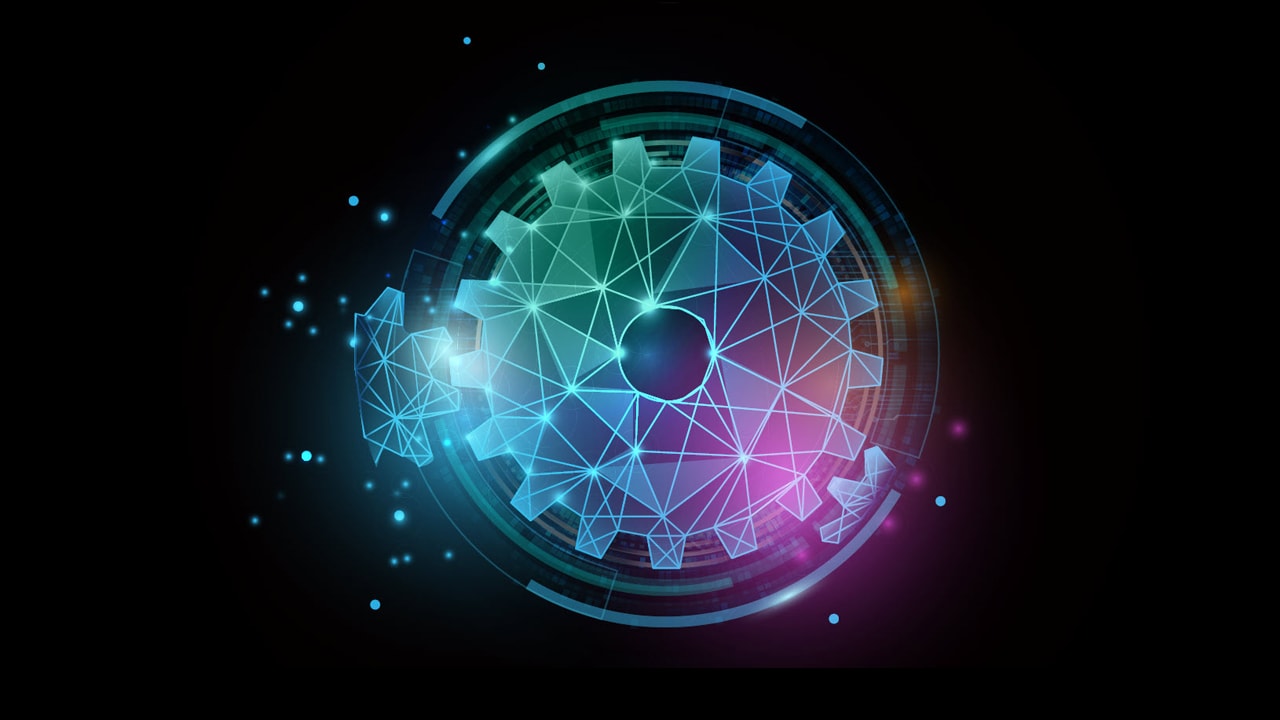The competitive advantages of trustworthy AI
The full potential of AI hinges on more than function. Organizations need confidence that the tools they deploy behave ethically and are aligned with their values and expectations across a range of dimensions. Yet, like any technology, AI tools have no agency. They are human-designed and driven, and thus the onus is on the enterprise to create AI that is trustworthy and to uphold AI ethics after deployment.
Importantly, this imperative is about more than just mitigating harm. There is real enterprise value in focusing on trustworthy AI. A challenge is to understand the components of ethical AI and bake that insight into enterprise strategy, operational deployment, and stakeholder engagement.

Opportunities inherent in trusted AI systems
There are many examples of cases where AI deployment went wrong: chatbots that became racist, discriminatory ad algorithms, natural language processing with dubious attention to privacy. The consequences (e.g., brand damage, regulatory fines) motivates enterprises to take corrective actions.
While a “do no harm” mindset is necessary if organizations look at AI ethics only through the lens of avoiding consequences, they might miss valuable opportunities that arise because AI is trustworthy.

Applying a framework for trustworthy AI
The first step in upholding trustworthy AI is agreeing on the ethical principles that are valuable for the enterprise’s strategy and the tools deployed in furtherance of it. What’s needed is a framework for consensus-building and decision-making. One example is Deloitte’s Trustworthy AI™ framework, which introduces six dimensions through which to evaluate AI behavior: transparency and explainability; fairness and impartiality; robustness and reliability; safety and security; responsibility and accountableness; and respect for privacy.
When an organization knows the ethical priorities for assessing its AI tools, it can inform processes, governance, training, and stakeholder buy-in that affects trustworthiness throughout the AI life cycle. Exploring each of the framework’s dimensions is a means to more keenly appreciate the inherent value in developing trustworthy AI.

Exploring the framework for trustworthy AI in detail
Transparent and explainable
Confidence in AI requires the capacity to understand its flaws, identify biases, perform audits of system accuracy, and, once models are deployed, monitor their drift. This may be accomplished through approaches such as modeling outputs, tracing decisions, or continuous monitoring, each of which has implications for a system’s effectiveness.
Fair and impartial
Impartiality rests in many ways on the quality of the data on which a model is trained. Enterprises are charged with ensuring data sets do not contain hidden biases, that real-world domain data is assessed after deployment, and that there are internal and external checks embedded in processes to continuously monitor and validate AI fairness.
Robust and reliable
Consistency is key. Trustworthy AI systems need to behave reliably and as expected, even when encountering unexpected data. They should also be robust enough to remain reliable at scale. What is more, there is a security component; the system should be robust in a way that shields it from malicious efforts to mislead the model into delivering inaccurate outputs and behaviors.
Safe and secure
Organizations should not only build toward systems that are resilient against known (and unknown) risks, but also communicate them to system users and stakeholders. In practice, this may mean adversarial model training, employing layered processes with redundancy built into the infrastructure, and rigorous governance and reporting that permeates the AI life cycle.
Responsible and accountable
Behind every AI tool is a chain of humans who made decisions on how the system is constructed and used in the real world. Trusted AI is that which is based on human accountability and responsibility for the tool’s behavior. This is one of the largest challenges in AI, and addressing it requires a clear chain of responsibility for correcting problems that manifest in operation.
Respectful of privacy
For trustworthy AI, organizations should ensure that training data is guarded, inputs are restricted to the model owner, outputs are delivered only to the user, and the model itself is shielded from exposure. In practice, users need clear opportunities to understand what data is being used and in what way, the choice to opt in or out of data-sharing, and a channel for communicating feedback and concerns.


A method for transforming the organization
The world is at the beginning of the Age of With, in which human capacity for insight, decision-making, efficiency, and innovation is dramatically expanded by cognitive systems. We are also entering an age of trust. The tools that unleash world-changing capabilities should be trusted to act in line with human expectations for ethics and appropriateness.The full potential of AI may hinge on that confidence.
Yet, trustworthy AI may be best viewed as a competitive opportunity, rather than as a burden. When an enterprise takes a holistic view of how AI systems operate with regard to the dimensions of trustworthiness, it can change the business. Leadership moves toward accountability, such as with a chief AI ethics officer or governance board. Ethics training and stakeholder buy-in proliferate throughout the enterprise, shifting the business culture toward an ethical mindset. Processes are expanded with focused efforts to continually assess whether AI is remaining within the boundaries of what “trustworthy” means for the organization.
In this, ensuring trustworthy AI is the vehicle for transforming the DNA of the enterprise, putting it on a forward leaning footing that is ready to thrive and compete in the Age of With. Rather than playing defense against emerging regulatory regimes and unethical AI behavior that engenders customer mistrust, the enterprise sees growing value in confidently leveraging AI capabilities. In that, the business can be uplifted overall, known not just as a user of trustworthy tools, but also as a trustworthy organization.
Download the REPORT



